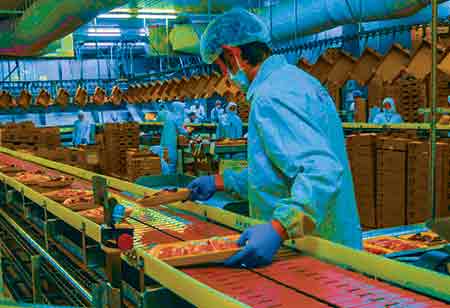THANK YOU FOR SUBSCRIBING
Be first to read the latest tech news, Industry Leader's Insights, and CIO interviews of medium and large enterprises exclusively from Food and Beverage Tech Review
Benefits of Leveraging Plastic Materials for Food Packaging
The Plastic is one of the most popular materials used in the food packaging industry, and for a good reason.

By
Food and Beverages Tech Review | Monday, November 21, 2022
Stay ahead of the industry with exclusive feature stories on the top companies, expert insights and the latest news delivered straight to your inbox. Subscribe today.
As the food packaging industry continues to grow, plastic for food packaging is composed of a wide variety of materials that vary in complexity based on the needs of the product.
FREMONT, CA: The Plastic is one of the most popular materials used in the food packaging industry, and for a good reason. Plastic is a versatile material with origins in the elements. Carbon, hydrogen, nitrogen, and sulfur are the components utilized in creating plastics. Depending on the type of packaging required, businesses can select plastic that is sturdy, clear, bacteria-resistant, lightweight, high-impact-resistant, corrosion-resistant, flexible, heat-resistant, glossy, soft, and so on. These excellent characteristics and adaptability make plastic one of the most popular and desirable packaging materials in the food packaging sector. Below are the benefits availed by the businesses of leveraging plastic materials for packaging
Temperature and impact resistance: The need for heat-resistant packaging for food goods cannot be overstated, and many plastic resins meet the bill. Products are subjected to several impacts during transport, resulting in a significant demand for impact-resistant packaging solutions that polymers such as PET, HDPE, and PET can quickly deliver.
Insulation: Certain products require continuous insulation; hence, plastics such as Polystyrene, etc., are needed to supply the proper packaging materials. Plastic materials, such as PP (Polypropylene) and others, can be utilized to create elastic packaging, which is essential for certain food packaging goods.
Light-weight: Plastics such as HDPE (High-Density Polyethylene) can be utilized to create super-strong yet super-flexible and lightweight materials. It is tremendously beneficial for milk jugs and other food packing products.
Recyclable: Materials made of plastic are recyclable. It consists of PET, PP, HDPE, LDPE, PVC, PS, and other plastic polymers. This ability to be recycled is a significant factor for individuals who seek environmentally friendly packaging. However, recycling is expensive, and many plastic makers do not favor it.
Rot-resistant: High-density polyethylene (HDPE) and other plastics are resistant to decay. Additionally, they are resistant to insects and molds. This combination of highly desirable characteristics makes HDPE polyethylene favored packaging material.
Waterproof: LDPE (Low-Density Polyethylene) and other plastics are waterproof. Packaging products made with LDPE will be preserved in the event of water spills or other mishaps.
I agree We use cookies on this website to enhance your user experience. By clicking any link on this page you are giving your consent for us to set cookies. More info







